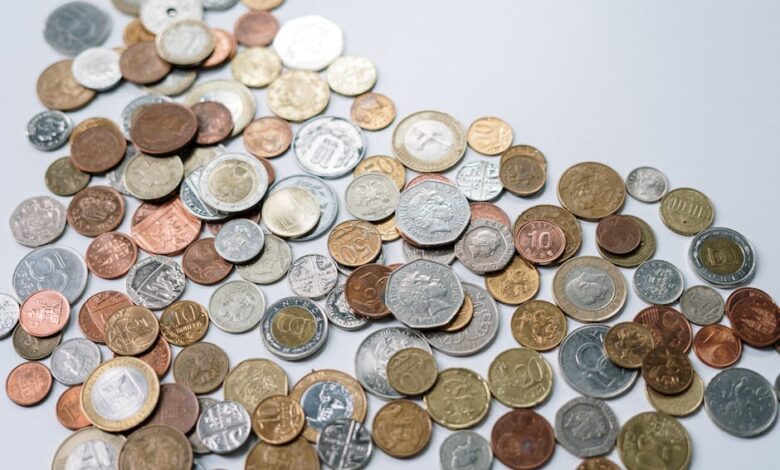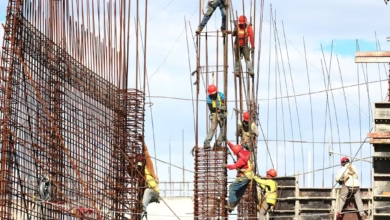Metals in Motion: Exploring the Interplay of Industry, Investment, and Global Trends

In an increasingly interconnected global economy, the dynamics of metal markets are more critical than ever. Metals play a multifaceted role, serving both as vital components in industrial applications and as strategic assets for investors. This article delves into the complexities of various metals, beginning with silver, which boasts a unique duality as both an industrial resource and an investment vehicle. We will explore how copper prices serve as a barometer for global economic health, reflecting broader market trends and consumer confidence. Additionally, the rising demand for rare earth metals driven by green energy technologies underscores the importance of sustainable practices.
As we compare platinum and palladium, we will evaluate which metal offers better investment potential in the current landscape. The article will also discuss how metals can effectively diversify investment portfolios, particularly in times of economic uncertainty, and examine the impact of inflation on the pricing of precious and industrial metals. Furthermore, we will consider the future of aluminum in a sustainable economy and analyze how mining regulations influence metal prices. Through this comprehensive exploration, we aim to illuminate the critical role metals play in both the industrial sector and the investment arena, providing insights for investors and industry stakeholders alike.
- 1. **Silver's Dual Role: Industrial Applications and Investment Opportunities**
- 2. **Copper Prices as Economic Barometers: Understanding Global Trends**
- 3. **The Green Revolution: Rare Earth Metals in the Age of Renewable Energy**
1. **Silver's Dual Role: Industrial Applications and Investment Opportunities**
Silver plays a unique and vital role in both industrial applications and as an investment asset, making it a versatile metal in today's economy. On the industrial side, silver is renowned for its exceptional electrical conductivity, thermal conductivity, and reflectivity, which make it indispensable in various applications, including electronics, solar panels, medical devices, and even automotive components. The growing demand for silver in green technologies, particularly in photovoltaic cells used for solar energy, has further solidified its importance in the industrial sector. As the world increasingly shifts towards renewable energy sources, the demand for silver is expected to rise, driven by innovations and advancements in technology.
In addition to its industrial uses, silver also serves as a popular investment vehicle. Investors often turn to silver as a hedge against inflation and economic uncertainty, viewing it as a safe haven asset similar to gold. The price of silver can be influenced by market trends, geopolitical events, and shifts in investor sentiment, making it a dynamic component of investment portfolios. Furthermore, silver is more accessible than gold, as it tends to be less expensive per ounce, allowing a broader range of investors to engage in the market.
The dual role of silver not only highlights its significance in the global economy but also underscores the interplay between its industrial demand and investment potential. As industries continue to evolve and adapt to new technologies, the future of silver appears promising, with opportunities for both economic growth and investment returns. This dual function makes silver a critical metal to watch in the context of ongoing economic developments and investment strategies.
2. **Copper Prices as Economic Barometers: Understanding Global Trends**
Copper prices serve as a crucial indicator of global economic health, often reflecting the overall demand for industrial activity. Known as "Dr. Copper" due to its ability to predict economic trends, copper is widely used in construction, electronics, and manufacturing. When economies are thriving, the demand for copper rises, driving up prices. Conversely, during economic downturns, decreased industrial activity leads to lower copper demand and falling prices.
Several factors influence copper prices, including supply chain dynamics, geopolitical events, and changes in production levels. For instance, disruptions in major copper-producing countries, such as Chile and Peru, can lead to supply shortages, pushing prices higher. Additionally, the emergence of new technologies and innovations in sectors like renewable energy and electric vehicles has significantly increased demand for copper, further solidifying its role as an economic barometer.
Market analysts closely monitor copper price fluctuations to gauge economic sentiment. Rising copper prices can indicate increased construction activity, manufacturing growth, and a robust global economy. In contrast, falling prices may signal a slowdown, impacting investment strategies and economic policies. Thus, understanding the trends in copper pricing allows investors and policymakers to make informed decisions based on the health of the global economy.
3. **The Green Revolution: Rare Earth Metals in the Age of Renewable Energy**
The transition to renewable energy has significantly increased the demand for rare earth metals, which are essential components in various green technologies. These metals, including neodymium, dysprosium, and lithium, play crucial roles in the production of high-performance magnets, batteries, and catalysts required for wind turbines, solar panels, and electric vehicles. As the world shifts towards sustainable energy solutions, the reliance on these materials is projected to grow substantially.
The rise in electric vehicle (EV) production exemplifies this trend. EVs often utilize rare earth metals in their motors and batteries, making them integral to achieving higher energy efficiency and lower emissions. Furthermore, the push for wind energy has heightened the need for neodymium-based magnets, which are essential for the efficient operation of modern wind turbines.
However, the increasing demand for rare earth metals presents challenges. The extraction and processing of these materials can have significant environmental impacts, leading to calls for more sustainable mining practices. Additionally, geopolitical factors can influence supply chains, as many rare earth metals are concentrated in specific regions, particularly in China. This dependency raises concerns about supply security and price volatility.
As governments and industries continue to prioritize green technologies, the market for rare earth metals is likely to evolve rapidly. Innovations in recycling and alternative materials may offer solutions to mitigate environmental impacts and reduce dependence on newly mined resources. Overall, the role of rare earth metals in the green revolution underscores their importance not just for the technologies of today, but for shaping a sustainable future.
In conclusion, the intricate dynamics of metals in both industrial and investment markets reveal their significant role in shaping economic landscapes. Silver, with its unique duality as both an industrial asset and a valuable investment, exemplifies the intersection of utility and financial strategy. Similarly, copper prices serve as a crucial indicator of global economic health, reflecting underlying trends and shifts in various sectors. The rising demand for rare earth metals, driven by green energy technologies, highlights the critical importance of these resources in supporting sustainable development.
As investors weigh their options between platinum and palladium, understanding the distinctive characteristics and market behaviors of these metals can guide informed decisions. Furthermore, diversifying investment portfolios with metals can offer a hedge against inflation, which often impacts the prices of both precious and industrial metals. Looking ahead, aluminum’s role in a sustainable economy is poised to grow, especially as industries seek lightweight and recyclable materials.
Finally, the influence of mining regulations on metal prices cannot be overlooked, as these policies shape supply chains and market accessibility. Together, these insights underscore the multifaceted nature of metals in our economy, emphasizing their importance not only as commodities but also as critical drivers of innovation and growth in a rapidly changing world. As we navigate the complexities of these markets, staying informed will be vital for both investors and industry stakeholders alike.





